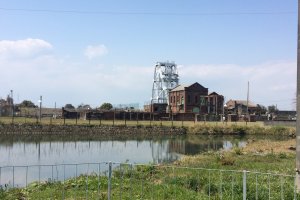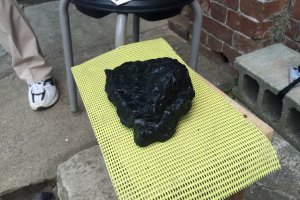The winds of modernization came to Japan during the Meiji period (1868 to 1912) with the onset of the industrial revolution. Its appetite for fuel culminated with the establishment of Manda Coal Mine in Arao City.
Another wave of change in the post modern era led to oil and nuclear fuels, which combined with cheaper coal from overseas, resulted in the closure of the mine in 1997. With a history of over a hundred years, the mine stands as a testament to the history of industrialization in Japan, and this has been recognized by its registration as a World Cultural Heritage Site for Meiji Industrial Revolution Heritage of Japan in 2015, in particular for its steel making, ship building and coal industry.
Despite its age, its buildings and machinery have largely stood the test of time, and has been preserved in a very good condition. You can visit the site and learn about its technology from a hundred years ago, with its World Heritage listing throwing a spot light to the magnificence of this complex.
Visitors will join a guided tour conducted by volunteers. The guide has first hand knowledge and explains the political background, the operation, machinery, as well as each building of the site. One of the most remarkable achievements is its elevator which can carry the miners down 294 meters in a minute. They then worked in the tunnels for several hours. The guide explained the mechanics of the elevator at the vessel hoisting machine room. You can appreciate the wisdom from the old days from its safety feature and their way of recording passenger activity before computerization. It was also interesting that they used a ladle to pour lubricant oil onto the large wires.
The stories of miners which we’re not familiar with these days also fascinating. Working for eight hours a day with three shifts, they were strictly checked before each shift to ensure that they didn’t carry matches or tobacco with them into the mine. Each miner carried four or five liters of tea to cope with the thirst from working under high temperatures. Once they finished their shift, no one could recognize them with the amount of soot on their faces. They had to go into three bathrooms, first they enter the bath with work clothes on and then they wash themselves and soak at the second and the third bathrooms.
This work under high temperatures also exposed another side of human nature. Placed in a confined space in such difficult conditions, some workers were known for having short tempers, throwing their basins or starting a fight. Then there were workers who frequently called the women in the office from the bottom of mine to check the weather or the time. Above ground, their houses were constructed nearby, with a weaving factory built for their wives to work which surprised the British people who visited the mine.
The tour takes about one hour, but I suggest you should also visit the museum to gain more insights into the mining industry and its evolution. There are many things we can learn from history such as safety, technology, law and welfare. You would muse over this lonely mine that used to burst at the seams.





























